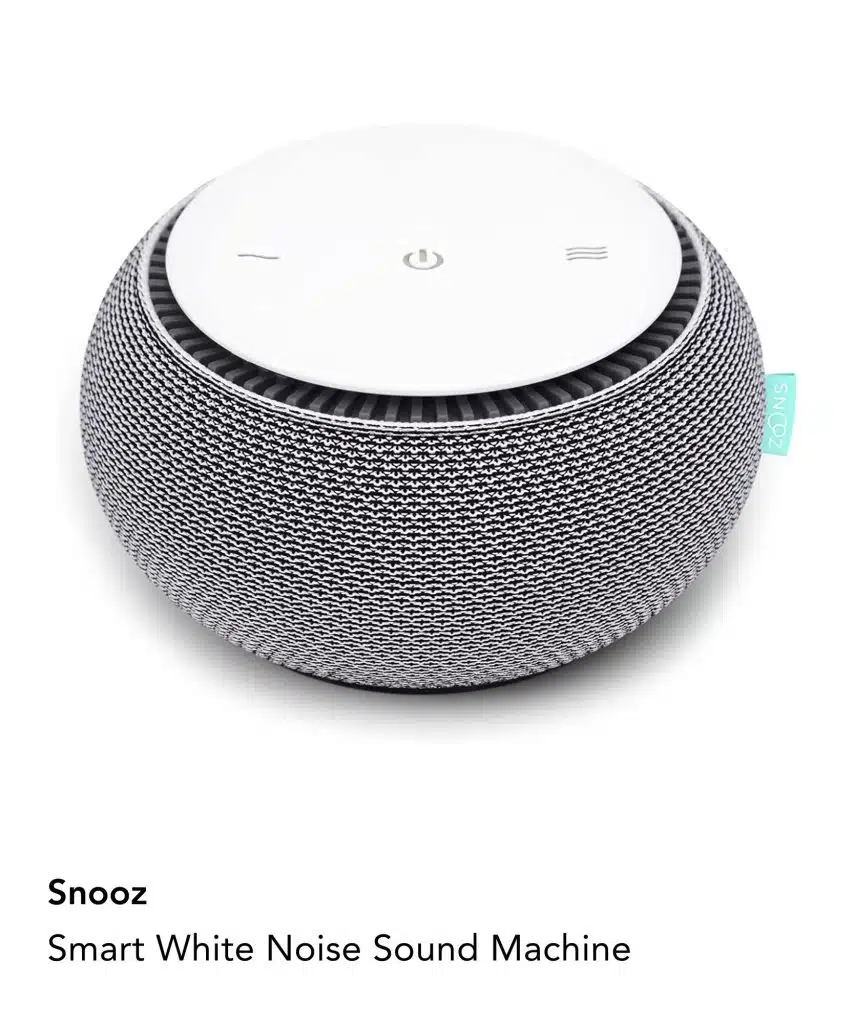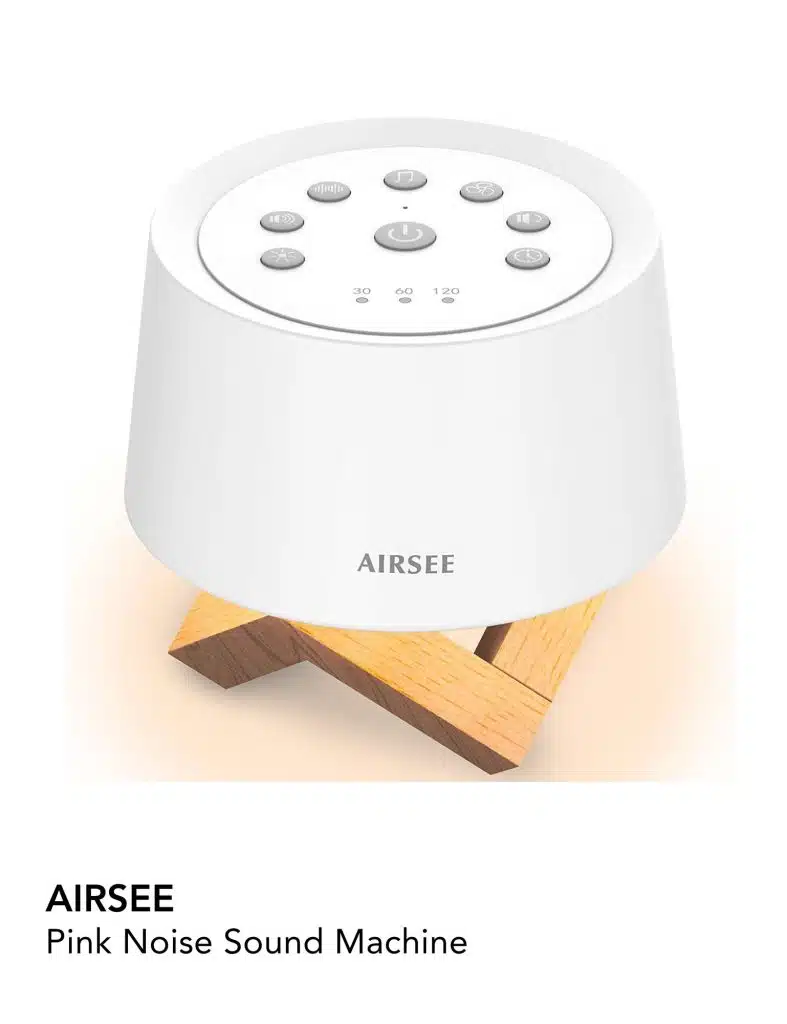This post is the ultimate guide on getting a baby to sleep through the night and lists the 18 best baby sleep tips that worked for me and got my daughter sleeping 12+ hours by four months old.

For more helpful and fun content, follow me on Pinterest!
This post is not intended to replace medical advice nor is it a medical diagnosis. For informational purposes only.
As parents of babies, we often ask ourselves:
“How to get babies to sleep through the night?”
Many parents believe babies sleeping through the night before 1 is some form of urban legend passed down for centuries by people who say they know someone whose baby sleeps through the night.
Kind of like how pirates used to say they know some guy who saw a mermaid?
Yeah. That kind of urban legend.
Except the jury is still out if any humanoid fish creatures are lurking around in the ocean.
A baby that sleeps through the night by four months old?
100% authentic, possible, and attainable.
Nope, not by pure luck, either.
It’s pretty rare to have a baby that naturally takes to sleeping like a duck to the water and needs little to no intervention.
These babies do exist.
However, they are the exception.
The rule is that most babies must learn to fall asleep independently, without your help, to become healthy long-term sleepers.
Learning how to get baby to sleep through the night is no easy task; I know this.
Adequate baby sleep takes work!
Teaching babies healthy sleep habits will set them up for a lifetime of restful sleep vital to their development as children.
Let me preface this by disclaiming that if nothing is broken, don’t fix it.
Don’t assume these tips because you feel you HAVE to do anything.
Nothing needs to change if you are happy with your sleeping dynamic and it’s working.
However, If you do want to take steps to help your baby sleep more independently, I can help!
This post reviews the 18 best baby sleep tips to get your baby sleeping through the night promptly.
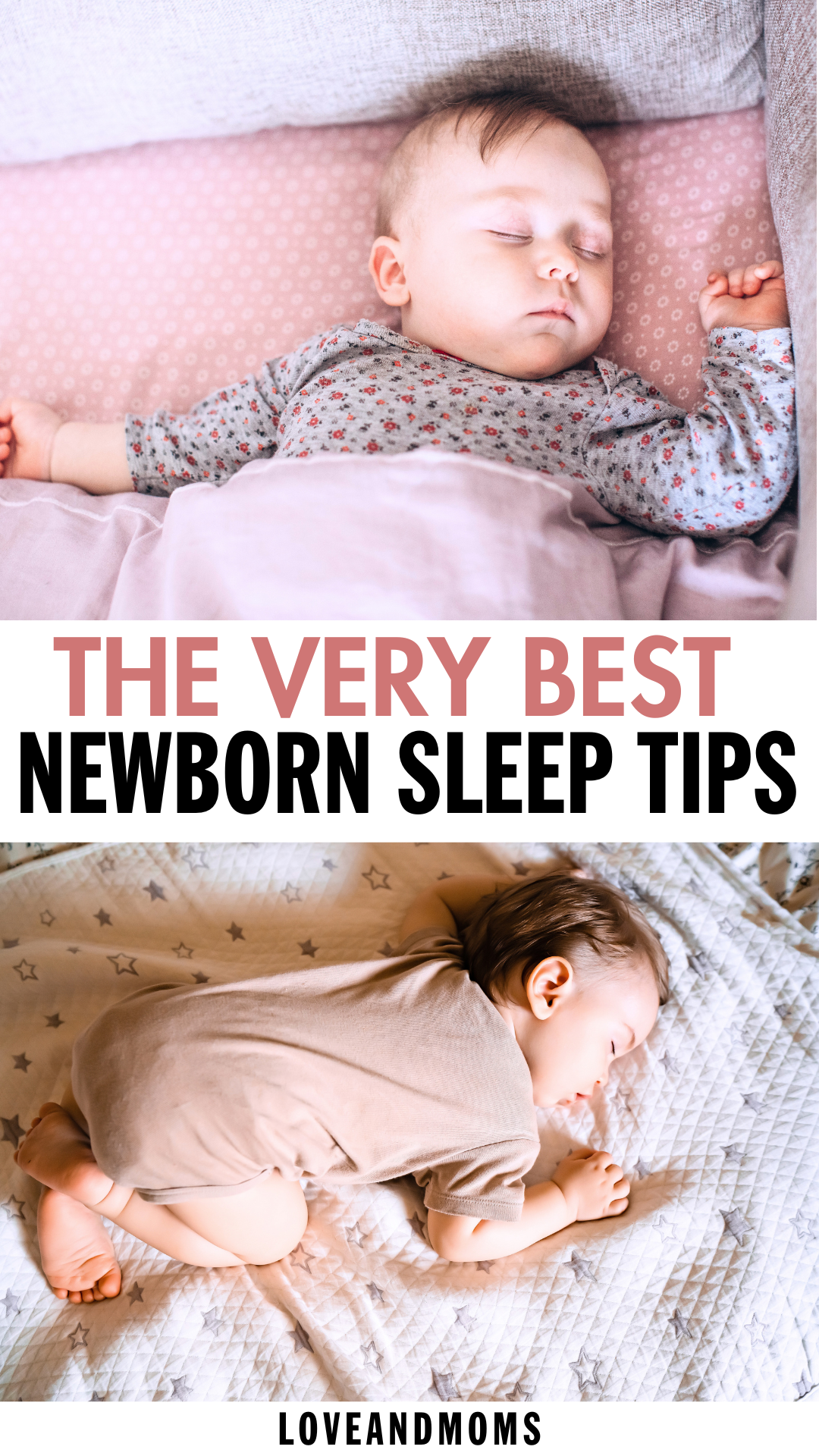
How to Get Baby to Sleep Through the Night
These are the steps I took to get my daughter to sleep 12+ hours through the night with no feedings or interruptions by the time she was four months old.
Establish Your Baby

Before you can get after it, it’s important to understand the person your baby is. Factoring in these variables will help you come up with a system that works best for your baby and family.
Temperament
Every baby is unique and different in its genetic makeup and temperament.
I will keep it real; it may not be what many want to hear.
Unfortunately, some babies repel sleep in every way possible.
Some babies are more challenging to parent and are more strong-willed, spirited, and high-needs than others.
No matter how hard you try, they don’t sleep through the night or don’t sleep well.
Baby sleep is incredibly challenging if you have a baby who suffers from colic.
I understand this, and what worked for me may not work for you.
There is no guarantee that we can get the baby to sleep independently or through the night.
We can, however, give it our best go and hope for the best.
If your baby doesn’t fall under the spirited, colic, or strong-willed categories, teaching a baby to sleep through the night is attainable!
Rule Out Any Health Conditions
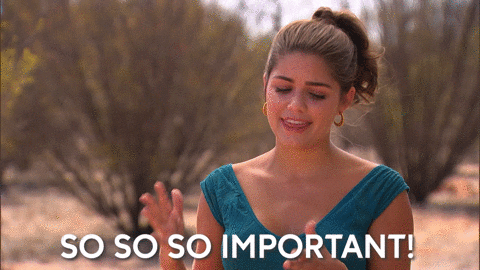
Before you learn how to get baby to sleep through the night, it is essential to ensure your baby is healthy and that there are no underlying health conditions that could interfere with your teaching ability.
How to get a baby to sleep independently means first out any digestive disorders, acid reflux, gas, feeding problems, or illness will help you feel confident that the baby has all its needs met and is healthy and capable of learning independent sleep habits.
Getting a clean bill of health from your pediatrician and discussing your plans to start teaching baby to sleep independently is always a good idea and a confidence booster.
Once you’ve received the OK from your doctor to proceed with healthy sleep habit teachings, we have the green light to go!
Let’s do it!
Determine the Age You Want To Start Training Baby to Sleep
This is different for everyone.
Some ambitious folks like to start teaching healthy sleep habits and independent sleep practices from the get-go!
Teaching them right from birth!
This, however, tends to be the more seasoned of moms, and it isn’t their first rodeo.
I certainly did NOT start from birth.
I was trying to survive and get by those first few weeks.
That’s okay if that’s the route you take.
I knew I didn’t want to implement more regular independent sleeping practices until she was around three weeks old.
When baby is developmentally ready is dependent on each baby, if they were born later or earlier, and their temperament.
Until then, I just did what worked.
After many contact naps and shift swapping with my husband since that first week, she only slept on one of us.
I tried not to sweat it those first couple of weeks and just tried to bond with my baby and keep her and myself alive!
Related Reading: 7 Causes Why Baby Sleeps With Their Mouth Open
Set the Baby Sleep Stage

This is where all the magic happens.
Establish an Age Appropriate Baby Sleeping Schedule
Not everyone is keen on schedules, but they have been my lifeline for my daughter’s life.
I used the Huckleberry app to keep track of her sleeping, diaper changes, feeds, and all of it.
My husband and I are data junkies, and seeing our daughter’s habits helped us establish a game plan for when we were ready to teach her independent sleep.
Ensuring you have an age-appropriate baby sleep schedule with wake windows that aren’t too long or too short will prevent an over or under-tired baby.
An under-tired baby won’t take to sleep well, nor will an overtired baby.
An overtired baby is what we want to avoid at all costs.
Don’t fret too hard, though, you will inevitably keep your baby up too long at some point, and you will experience the wrath of it and then move on.
You will learn how long is too long for your baby and will get better at avoiding an overtired, cranky mess that is impossible to put down.
By tracking your baby’s sleep over the first few weeks, you will start to see a pattern emerge.
You will start to see the most common times of the day when they are consistently napping or awake.
This will make it easier to establish a consistent schedule.
Establish a Consistent Morning Wake Time

I know what you are thinking.
If we want the baby to sleep through the night, wouldn’t it be better to have a consistent bedtime?
I know, it makes some sense, I get it.
But what if I were to tell you a massive component of how to train a baby to sleep all night by having a predictable and consistent wake time each morning to start the day off the same every day?
By having a consistent wake time every day, you are setting up your baby to habitually wake up at the same time every day, which creates the foundation for good restful naps.
Good naps lead to even better nights’ sleep.
When you establish a wake time of, let’s say, 7 am, you are creating that internal clock and habit for the baby to take to.
After consistency, baby will naturally wake up at this time every day.
What this does is it sets the stage for predictable nap times each day as well.
Each morning, wake baby up at the same time.
Then, depending on baby’s age, put them down at the following age-appropriate nap time.
Example Wake Time
For instance, if baby is 4 months old and wakes at 7am for the day, this sets you up to put them down for a nap at around 8:15.
This will be the same every day. This will become habitual for baby.
Bedtimes will most likely be the one to change day by day, depending on how naps go.
If baby has short naps, bedtime will be earlier to compensate for lost naps.
That way the baby can have a longer night of restorative sleep to make up for the short nap day.
Then wake them up at the same time the next day and try again!
I know it can be challenging, especially if baby was up a lot the night before.
All you want to do is desperately sleep in!
However, it is essential to grin, bear, and stick to it.
Consistent morning wake time is crucial to getting them to sleep longer at night.
If their wake time is all over the place, so will their sleeping habits.
At around three weeks old, I started implementing a 7 am waketime every morning, aiming for an 8:30 bedtime every night.
This was the first step in getting my daughter to sleep through the night—a predictable start and end to the day.
As she got older and her sleep needed to be shifted, I would adjust her bedtime earlier and earlier.
I did this till she reached a bedtime of 7 pm. A 7-7 night schedule was what worked best for our family.
Get Black Out Shades
Keeping baby’s room as dark as possible for naps and bedtime is SUPER important for baby sleep.
No night lights, no light coming from the window, nothing.
Keeping it as dark as possible will help them connect sleep cycles easier and sleep much longer.
Getting good, quality, thick black-out shades are best.
We have tried going cheaper and getting some basic blackout shades at Walmart with NO success.
It’s worth investing in a baby’s sleep environment if the payout is the baby sleeping all night!
Measure your bay’s windows and buy a pair of blackout curtains to fit.
The ones we use are the NICETOWN Black lined shades.
Not only do they keep our daughter’s room nice and dark, but they also help keep it insulated too.
Keep Baby’s Room Cool
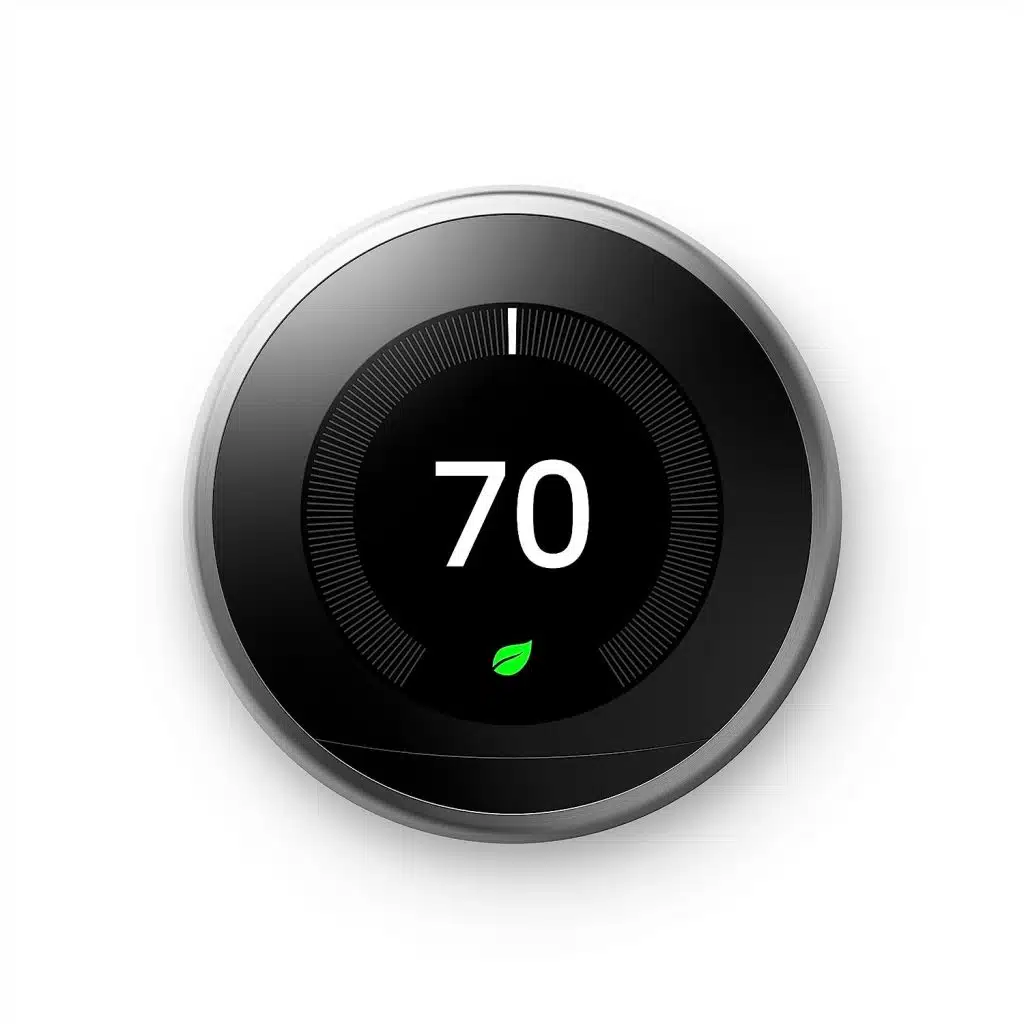
Keeping the baby’s room at a stable, cool temperature is critical.
They can’t regulate their body temperature very well yet. So keeping it balanced and cool keeps them comfortable.
The best temperature to keep the baby’s room is roughly 68-72 degrees.
We use a Google Nest smart thermostat set at this range to keep our daughter’s room at a comfortable temperature.
If you have a regular thermostat, your baby monitors should read the temperature okay, give or take a couple of degrees.
Get a Sound Machine
You NEED a sound machine.
Sound machines are an essential practice to sleep training babies.
Preferably one that has pink noise instead of white noise.
White noise machines tend to be more high-pitched and static.
Pink noise resembles being in a flying plane or blood flow in the womb.
Pink noise has been proven to be more soothing than white noise.
It’s more of a deep humming as opposed to shrill static.
Once we found this out, we switched our sound machine that my husband and I use, and always within five minutes, my husband and I were ready to call lights out!
Pink noise will help drown out any excess noise outside the baby’s room that would otherwise wake them.
It will also help them connect sleep cycles with the soothing frequencies in their room.
Thus, the baby sleeps longer hours.
It is incredibly soothing and doesn’t have to be super loud.
Considering how many hours a day babies sleep, they will spend a lot of time under the sound machine.
Which Sound Machine For Baby is Best?
The one we use for our daughter is the Snooz Sound Machine.
We love it; our daughter sleeps well with it and it is not too loud.
You can create schedules and control the machine from your app.
In my opinion, it’s better than the Hatch sound machine.
It contains a brushless motor with up to 98% less energy and a more organic fan sound to the humming.
Much more soothing than static.
If you want a cheaper option, my husband and I use the Airsee Sound Machine for our room; we love it.
It has numerous pitches ranging from white to brown noise and various volumes.
However, it isn’t Wifi or app operable, nor has all the bells and whistles.
It’s just an old-fashioned sound machine with a button to turn it off! If this is good enough for you, it is the dupe route.
Whether you want to use white or pink noise, a sound machine is a must when sleep training for babies.
How to Sleep Train Baby
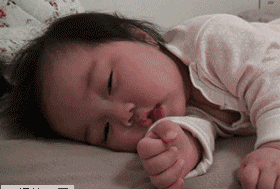
Now let’s get into some of the fundamentals of getting your little one to sleep longer.
Let Baby Wake You At Night
I never woke up my daughter in the night for feeds.
I didn’t have to. She would always wake up once she was ready to eat.
Since I never woke her up in the night for feeds, she never established a habitual tendency to wake up at those times that would have been scheduled.
It would be different some nights.
Since we implemented this from the get-go, she was only waking up once a night to eat by the time she was three months old.
She eliminated all her other feed herself without my help.
She decided if she was hungry and wanted to be fed and decided if she didn’t want any more.
We would put her down early at 8:30, and she would wake up at 11 pm, then 3 am, then 6 am.
So she was roughly waking three times per night very early on.
She woke up at these times herself, give or take 15 minutes.
Then one day, when she was four weeks old, she slept till 1 am after we put her down at 8:30.
Then she woke at 4, and I would get her up at 7 am.
She started eliminating her feeds on her own.
Follow an Eat, Play, Sleep Foundation
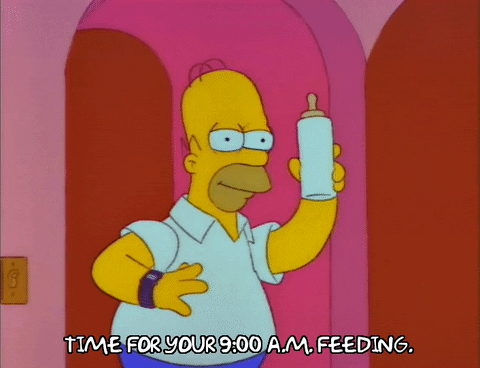
Some moms might struggle with this, especially mothers who nurse babies to sleep.
For many babies, eating comes right before sleep. Many babies are nursed to sleep or bottle-fed to sleep.
Shoot, I was also bottle-feeding Annabelle to sleep those first few weeks.
Therefore, it tends to come at the end of a wake window to aid them to sleep.
However, the problem that can arise with this is it creates a feed-to-sleep association.
The baby will develop a habitual preference for falling asleep while nursing or bottle feeding.
What will happen is that once the baby reaches a more mature sleep cycle and begins to rouse wake in the middle of the night fully, they will need to be fed back to sleep to get back to sleep.
This happens because this is the only way they know how to fall asleep.
This can create a dependency on food to sleep and feel comforted.
Often, giving them unnecessary calories at night that they would otherwise eat during the day but they don’t because they get fed at night.
This makes our jobs harder as parents because, when they wake up at night, we don’t know if they are hungry or can’t fall asleep without it. Either way, they fall asleep with it.
We won’t know if they are waking out of hunger or habit.
Related Reading: Taking Cara Babies : An Honest Mom Review
Prevent the Feed-to-Sleep Association
If you are wondering how to sleep train a baby, preventing the feed-to-sleep association is fundamental as they age.
As we caught our breath, I had no problem doing whatever it took to get my daughter to sleep those first few weeks.
I fed her to sleep, and she slept on us as well.
Once she reached about three weeks, though, we stopped feeding her to sleep altogether and implemented this routine.
What I love about eating, playing, and sleeping is you greet the baby with a delicious meal upon waking up.
Everyone loves that!
You also know they are fed and can keep good, consistent track of feedings.
Also, this will eliminate any association between sleep and getting fed because they are on opposite ends of the wake window.
I followed this foundation since she was one month old, and I followed it up until she was around 14 months, when we dropped formula feeding completely.
Now that she is 18 months, after her one nap, she is greeted with a yummy, nutritious snack to munch on.
Worked like a charm.
Eliminate Sleep Associations
This one will be a doozy for most of you.
I know it was for us.
However, it is one of the most critical aspects of teaching babies healthy sleep habits.
To help babies sleep unassisted, we must ditch what we have been doing to help them fall asleep.
Other less common methods like car seat naps and baby swing naps can hinder your babies’ ability to sleep motionless.
Many of us use a few of these tactics to lull our little ones off to dreamland.
I know, I was one of them.
Very early on, it didn’t take much to help drift the baby off to sleep.
They aren’t very alert yet so that they can sleep anywhere.
I used to feed her to sleep while rocking her.
Then I would rock her with the Binky in her mouth.
Next, I would sway and bounce her with the Binky in her mouth.
I did this until I took nearly 25 minutes to get her to sleep, for her to sleep 25 minutes.
It wasn’t working.
What If You Don’t Eliminate Them?
What happens when we don’t take steps to help baby sleep more independently, those sleep associations may hinder our baby’s ability to fall back asleep without our intensive interference every time.
Once they reach a particular developmental milestone in their sleep cycles, around four months old, they fully rouse awake at night, just like us.
We can fall asleep without someone rocking us and nursing us to sleep.
We don’t need help.
If this is, however, what we have been doing for our babies, this is what they will expect every time they wake up.
They will expect to be bounced, rocked, fed, nursed, whatever, back to sleep.
All of these practices are fine to use short term in those early weeks.
However, I think you may find the longer they are used, the worse the baby will sleep and the more dependent they will be on you to soothe themselves.
This proved to be true with my daughter as well.
Once she was 3- months- old, she just needed to be rocked even longer and longer, swayed longer and longer, and needed her Binky in at ALL TIMES.
God forbid the binky fell out of her mouth and we weren’t there to put it back in before a meltdown ensued.
We played paci pong, rocking and swaying, and after 30 minutes, she would rouse back up the second we put her down in her crib.
Then the process would start all over again…
Everyone Will Be Tired and Frustrated
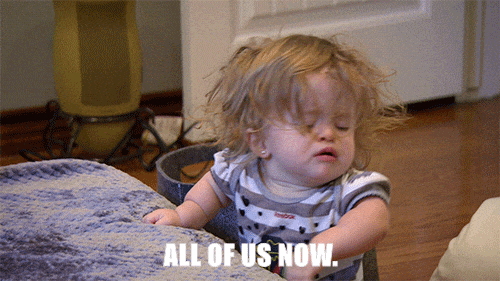
What we were doing before wasn’t working nearly as well, creating a dependency on those associations and us to help her relax and sleep.
Almost like a junky.
They create a tolerance where they need more and more for it to work.
I would be swaying and bouncing her, feeling my body burning and screaming with exhaustion.
I desperately hoped she would fall asleep after a long, mentally and physically draining day.
This would create frustrations in her because she also needed us to do these things for her.
She couldn’t do it herself.
She wasn’t sleeping well, so she was cranky and needed more soothing.
It was an endless cycle.
Squashing these associations before or once you start encountering problems is definitely suggested.
Remove the Swaddle
You must remove the swaddle for a baby to self-soothe and sleep independently.
They need access to their hands to either rub their faces or suck their hands and fingers to relax.
They also need motor skills to self-soothe.
We ultimately transitioned our daughter out of the swaddle by three months old.
It took about a month before she slept un-swaddled in a sleep sack.
This made it much easier for her to find her way of soothing herself and making herself comfortable.
Invest in a Quality Sleep Sack

There are many sleep sacks to choose from out there. It’s easy to get decision fatigue.
Many people swear by the Nested Bean Sleep Sacks.
You are welcome to go this route.
However, we tried them but found they weren’t of outstanding quality.
We always got the proper size, and within maybe a few weeks, the material started stretching, tearing, and unraveling at some seems.
They also made my daughter too hot and weren’t breathable. She would sweat in them, leaving stains on the garment itself too.
Considering they are roughly $40-$50 a pop, it was disappointing that they didn’t last very long.
To be frank, I didn’t even notice a difference in my daughter’s sleep quality either.
We ended up investing in the Dreamland Baby Sleep sack.
It, too, is a weighted sleep sack.
Except for the whole front side of the blanket is weighted, not just a single rice pack on the chest like with Nested Bean.
Why It’s Important
This sleep sack made a massive difference in our daughter’s sleep quality.
We only recently transitioned her out of it at 14 months old since she loves being mobile while sleeping.
The weighted sleep sack was terrific while she was sleeping like a rock!
We will get her their weighted blanket once she safely sleeps with a loose blanket instead!
I’m not going to lie; it is a hefty investment.
The sleep sack runs at 89 dollars per sack.
I cringed initially.
However, we were willing to buy another weighted sack that was of better quality.
We used the after-pay feature and paid it off interest-free after two months.
Worth it.
Are Weighted Sleep Sacks Safe?
The AAP has always poo-pooed weighted sleep sacks. They don’t say why.
However, this is where Dreamland Baby can ease your worries.
Their product was designed in partnership with pediatricians and the Neonatal Intensive Care Unit Nurses and has undergone extensive testing and research to ensure its safety.
They give extensive insight into their research studies and processes of safe sleep on their website.
However, you do not NEED to have a weighted sleep sack.
If you are nervous, a sleep sack that is not weighted will suffice fine.
Start Doing Less & Less
To help babies learn to fall asleep independently without your help, we need to start helping them to sleep less and less.
The less help they need from you to fall asleep, the more confident and secure they become in their ability to fall asleep alone.
This wonders for their overall self-esteem and ability to feel safe and comfortable in solitude, a vital life skill.
When they know how to fall asleep without all the help, they won’t freak out or panic when they wake up and find they aren’t being rocked in your arms or nursing with you anymore.

You do not have to do this cold turkey.
Just take one element out at a time.
For example, if you have been nursing while rocking them to sleep, try to eliminate the rocking gradually.
Start rocking baby less while nursing until you stop motion completely.
Once baby has learned to fall asleep without rocking, they are only being nursed to sleep.
Believe it or not, this is progress!
Eliminating sleep associations one by one will lead them to independent sleep!
Then, try to slowly stop nursing by introducing a bottle to substitute the sucking sensation for the baby.
The best bottle that resembles a natural nipple is Lansinoh Bottles.
These are the bottles we used up until she stopped bottle-feeding together.
After that, then switch the bottle for a Binky.
Then, once the baby has learned to fall asleep with just the Binky and no motion, you can start putting the baby down without anything.
This was the route I took with my daughter. When we eliminated the feed-to-sleep association at 4 weeks old, we replaced her bottle with a Binky.
We were rocking her to sleep with the Binky in her mouth. We did this for both naps and bedtime.
After two weeks of rocking her to sleep with the Binky in her mouth, we attempted to rock her less and less.
About three weeks later, we attempted to just put her down with the Binky in her mouth with just a couple of light sways, and we would put her down with the Binky in her mouth awake.
We got to the point when she was around three months old that we could put her down with just the Binky, wide awake, and she would suck her Binky to sleep.
The Binky was the last step to full independent sleep.
Put Baby Down Fully Awake

This is the last step to getting a baby to sleep independently and one of the most challenging steps for most parents.
Many parents skip this step out of desperation or a time crunch.
You are welcome to take this route.
It is undoubtedly the quickest route if you don’t want to do it gradually.
If you plan to do it gradually, it is best to start sooner than later.
Since we took the gradual route, our daughter fell asleep on her own, in bed, while sucking her Binky without any additional motion.
All we had to do was remove the Binky. This we did cold turkey.
As usual, we had our naps for the day along with our nap routines. It was time for bed, and we finished our bedtime routine.
They May Surprise You
The last step was to put the Binky in her mouth.
This time, I skipped it and just put her straight down.
Looking at the monitor, she was initially confused.
Then, understandably, she got upset.
It never feels good hearing your baby fuss.
She was allowed to be upset because I switched it up on her.
However, rather quickly, something surprising happened.
She found her thumb.
Once she found her thumb, she was peacefully sucking it right to sleep.
Her thumb has officially replaced the Binky.
She no longer has codependency with her Binky, and we no longer have to buy them!
She learned she can soothe herself!
Wherever she wants without our help!
She learned the skill of falling asleep all by herself!
We were so proud of her. We knew she could do it. Once she found her thumb, the rest was history.
Success!
Continue Night Feeds

Teaching the baby to sleep independently does NOT mean you eliminate night feedings before they are ready.
Unless your pediatrician gave you the okay that your baby is at a healthy enough weight to forgo night feeds.
We had the okay from our pediatrician to stop night feeds altogether when my daughter weighed 12lbs and was 3 months old.
At this point, Annabelle was only waking once, around 3-4 am to eat, and that was it.
Because of it, she was starting to eat bigger bottles during the day, so she was fully satiated most of the night.
What we found is this.
After we took the Binky away and she learned to suck her thumb asleep, she dropped that last night feed herself four days later.
Yup.
So when Annabelle woke up, I would feed her like I always did. Then just put her back down awake.
Each night she woke up a little later and later.
On the fourth night, we heard her rouse briefly with some cooing.
We checked the monitor and saw her rolling a little and sucking her thumb.
Then, she fell asleep.
She didn’t even cry to be fed.
She wasn’t hungry.
By day 5 of dropping the Binky, Annabelle slept uninterrupted from 7 pm-7 am; she was nearly four months old.
She felt fine all night and didn’t need to call us.
Related Reading: The Best Sleep Schedule For 2 Month Old Baby
Stay Consistent & Don’t Give Up

Anything we do successfully is because we get up every day and keep doing it.
Do your best to press on even when you feel they will never get it; keep going.
By the time Annabelle was four months old, she had slept 12+ hours without night feeds.
Now at 18 months old (December 2022), we have never experienced any sleep regressions.
She will need our help and call out when she is sick, teething, or taking an unexpected poop.
It took us about 12 weeks of teaching independent sleep habits before Annabelle slept entirely through the night.
I want to emphasize that getting Annabelle to sleep through the night DIDN’T happen overnight.
It took nearly three months of work to get a whole night’s sleep.
It took a lot of planning, strategy, intention, and effort to put everything into fruition.
Sleep training babies IS NOT just one day choosing to plop them in their crib arbitrarily and then walking away for the night, and that’s it.
I’ll say it again, DO NOT JUST PUT YOUR BABY DOWN FOR THE NIGHT RANDOMLY WITHOUT ANY PLAN OR STRATEGY IN PLACE.
A lot of time, planning, and effort has to be put into getting your baby to sleep through the night.
It won’t happen by accident, and if you don’t want to wait years before your kid sleeps alone uninterrupted, it’s worth teaching your kids how to now.
We are, after all, teachers to our kids.
Just like we must teach them how to use the potty, many must be taught how to sleep independently.
Our job is to set the stage for success. The rest is up to them. Set the stage for success for your baby!
Our babies are so intelligent and capable. If we provide them with the tools, they will take them.
I believe they will surprise you!
Great Baby Sleep Takes Work and Sacrifice

Baby sleep constantly evolves and is one of the most challenging quests for parents.
Even those with great sleepers now had to navigate the tricky waters to sail into calmer ones.
Getting a baby to sleep well is a long process of transition.
I want to emphasize that getting a baby to sleep through the night isn’t a hack or luck but a lifestyle.
There are so many factors outside of sleep specifically that go into getting a baby to sleep.
Teaching babies lifelong sleep habits is hardly the cheat code or shortcut route.
It’s extremely hard and takes a ton of dedication and intention.
For Annabelle’s first year and a half, my life revolved around her routines, naps, and bedtimes.
I felt my job was to set the stage for her to sleep well and grow that first year.
Baby getting restful sleep is vital for their development.
I sacrificed much of my social life to make this work.
Did I get FOMO and miss out?
Yes.
Did I have the one kid I know that slept through the night and slept well for naps by 4-months old?
Also yes.
That was a trade-off I was willing to make.
That first year was so finite and short, that I was willing to put much of my social life on hold to establish healthy sleep habits for my daughter that would last her a lifetime!
Naps and routines won’t last forever.
A child that knows how to sleep independently and happily will, though!
Best Baby Sleep Tips

Baby sleep takes patience, a lot of faith, courage, and love in yourself and your baby to get you through it.
Your baby IS smart, your baby IS capable, and your baby CAN learn.
Whatever you decide to do regarding your child’s sleep, as long as you are happy and comfortable with it, and everyone is getting healthy sleep, that’s all that matters.
NONE of these baby sleep tips are “do this or fail.”
If you enjoy what you are doing right now, it works, and everyone is happy, that is all that matters.
Happy sleeping, everyone and take care!


